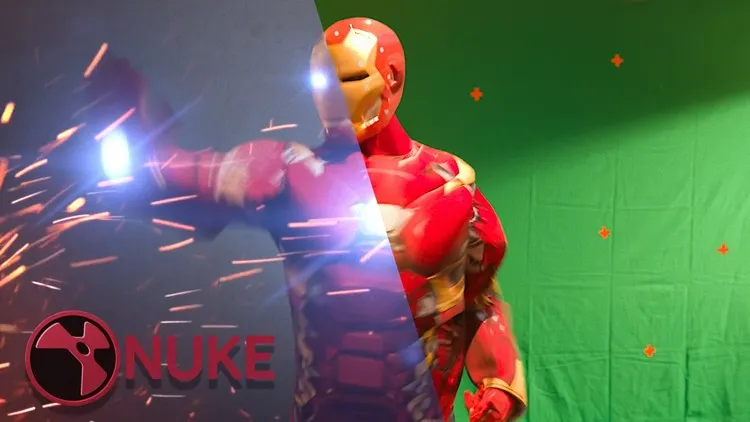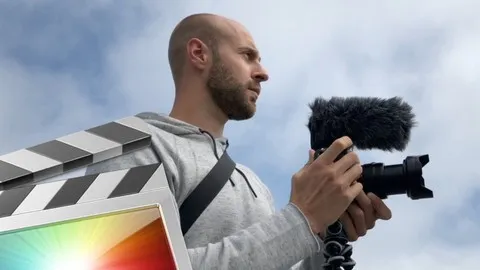
Paint and Roto for Feature Film VFX 01 
This course will teach students the fundamentals of Paint and Roto for Feature Film VFX. Students will learn how to use tried and true methods to execute marker removal and other basic paint chores to feature film standards. They will also learn how to do 2D tracking, 3D Projections, Edge Fixing, denoise and regrain plates, erase markers, bring back foreground objects, and more. With this course, students will gain the confidence to predict what to expect in the industry. ▼
ADVERTISEMENT
Course Feature
![]() Cost:
Cost:
Free
![]() Provider:
Provider:
Udemy
![]() Certificate:
Certificate:
No Information
![]() Language:
Language:
English
![]() Start Date:
Start Date:
Self Paced
Course Overview
❗The content presented here is sourced directly from Udemy platform. For comprehensive course details, including enrollment information, simply click on the 'Go to class' link on our website.
Updated in [May 25th, 2023]
This course, Paint and Roto for Feature Film VFX 01, provides students with the skills and knowledge to execute marker removal and other basic paint chores to feature film standards. Students will learn how to use tried and true ways to complete tasks such as 2D tracking, 3D Projections, Edge Fixing, denoise and regrain plates, erase markers, and bring back foreground objects. Through this course, students will gain the confidence to predict what to expect in the industry.
[Applications]
Students who have completed this course will be able to apply their knowledge to the industry by being able to execute marker removal and other basic paint chores to feature film standards. They will also be able to use 2D tracking, 3D Projections, Edge Fixing, denoise and regrain plates, erase markers, bring back foreground objects, and 2D tracking.
[Career Paths]
1. Paint and Roto Artist: Paint and Roto Artists are responsible for creating digital effects for feature films. They use a variety of software to remove unwanted elements from a scene, such as markers, wires, and other objects. They also use 2D and 3D tracking techniques to create realistic effects. This job is becoming increasingly important as more films are being shot digitally and require more complex effects.
2. Visual Effects Supervisor: Visual Effects Supervisors are responsible for overseeing the entire visual effects process for a feature film. They work closely with the director and other production staff to ensure that the visual effects are up to the highest standards. They also work with the Paint and Roto Artists to ensure that the effects are completed on time and within budget.
3. Compositor: Compositors are responsible for combining multiple elements into a single image. They use a variety of software to create realistic effects, such as adding 3D elements, creating matte paintings, and adding motion blur. This job is becoming increasingly important as more films are being shot digitally and require more complex effects.
4. Motion Graphics Artist: Motion Graphics Artists are responsible for creating motion graphics for feature films. They use a variety of software to create realistic effects, such as adding 3D elements, creating matte paintings, and adding motion blur. This job is becoming increasingly important as more films are being shot digitally and require more complex effects.
[Education Paths]
1. Bachelor of Science in Computer Animation: This degree program focuses on the fundamentals of computer animation, including 3D modeling, animation, and visual effects. Students learn how to create realistic and believable characters, environments, and effects for feature films, television, and video games. This degree program also covers the latest trends in animation technology, such as motion capture and virtual reality.
2. Bachelor of Science in Visual Effects: This degree program focuses on the art and science of creating visual effects for feature films, television, and video games. Students learn how to use software such as Adobe After Effects, Autodesk Maya, and Nuke to create realistic and believable effects. This degree program also covers the latest trends in visual effects technology, such as motion capture and virtual reality.
3. Bachelor of Science in Digital Media: This degree program focuses on the fundamentals of digital media, including video production, audio production, and interactive media. Students learn how to create digital media content for feature films, television, and video games. This degree program also covers the latest trends in digital media technology, such as motion capture and virtual reality.
4. Bachelor of Science in Game Design: This degree program focuses on the fundamentals of game design, including game mechanics, level design, and user experience. Students learn how to create engaging and immersive video games for consoles, PCs, and mobile devices. This degree program also covers the latest trends in game design technology, such as motion capture and virtual reality.
Course Syllabus
Introduction
Cleanplates and Keymixing
Keymixing Roto and Tracking
Roto Offsetting
Live Painting
2D Tracked Patch
3D Projected Patch
Edge Blur Unpremult
Keying and Offsetting
Final Markers
Edge Fixing 1
Edge Fixing 2
Edge Fixing 3
Edge Fixing 4
Re-graining and Conclusion
Pros & Cons

Learned a lot

Professional instructor

New approaches

Great tutorial

Free course

Lack of explanation

Big silent gaps

Hard to attend

No quiz or interest
Course Provider

Provider Udemy's Stats at AZClass
Discussion and Reviews
0.0 (Based on 0 reviews)
Explore Similar Online Courses

Python - Bottle Web Framework

Critical Thinking and Problem Solving Online Class

Python for Informatics: Exploring Information

Social Network Analysis

Introduction to Systematic Review and Meta-Analysis

The Analytics Edge

DCO042 - Python For Informatics

Causal Diagrams: Draw Your Assumptions Before Your Conclusions

Whole genome sequencing of bacterial genomes - tools and applications

Learn Final Cut Pro X Course Beginner To Intermediate

How to VLOG: Complete Beginner& Course


Start your review of Paint and Roto for Feature Film VFX 01